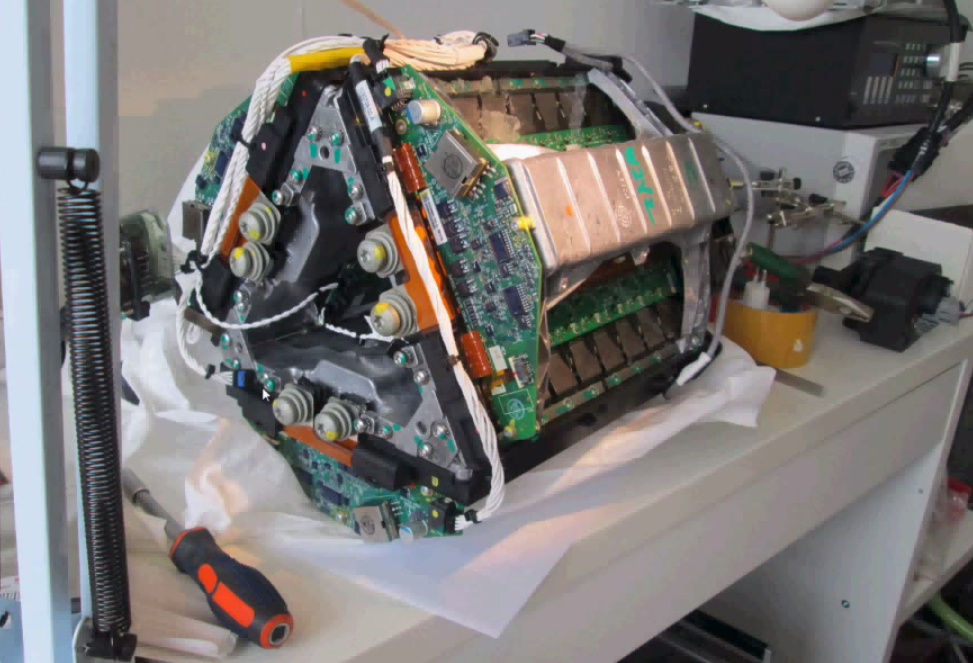Learn Engineering recently made a very informative video about how an electric car works. It is pretty in depth, but you don’t need a physics or engineering degree to understand it. Electric vehicles are simple. They really only depend on a few major components less moving parts than and ICE engine. The video above details the main parts of a typical all-electric drive train.
1. The Telsa Model S has an induction motor with a stator and a rotor. The stator is the stationary part of an electric generator or electric motor. The non-stationary part on an electric motor is the rotor. The stator conducts and alternating current which creates a rotating magnetic field. This induces the rotor to rotate along with it. The frequency of the AC power supply directly correlates to the speed of the rotor, and thus the car. The motor speed can range from 0 to 18,000 rpm and the motor works efficiently at any speed range. An internal combustion vehicle produces usable torque and power at a limited speed range, which is why an IC engine needs a transmission. A piston powered engine also must convert linear motion to rotational motion therefore it also needs many components to convert and balance forces.

2. The inverter acts as the brain of the car because it is in charge of converting the direct current (DC) output from the batteries to AC output for the induction motor. The inverter controls the alternating current frequency, which, as you remember, controls the speed of the motor.
3. The battery of a Tesla Model S is a huge collection of tiny lithium ion batteries situated in “packs” lining the underside of the car. This aids in the vehicles low center of gravity. Tesla chose to basically just fill the packs with tiny cells rather than a few giant batteries because smaller cells can be more efficiently cooled. Heat is a major limiting factor in battery function.

4. The Tesla Model S uses a single speed transmission. Because of the nature of an electric motor, electric vehicles don’t require multiple gears to maintain torque. Also electric vehicles reverse by simply reversing the power phase of the AC current to the motor.
5. Like in most electric cars today, the Tesla Model S has regenerative braking. As soon as you lift the gas, the car will slow down as if by engine compression in an internal combustion car. But the key difference here is that energy is not lost to heat and friction, but recaptured in an electric car. The induction motor becomes a generator when the Tesla slows down. It accomplishes this when the rotor speed becomes faster than the rotating magnetic field. The generated electricity goes to the inverted and then the battery pack.
There you have it. The Tesla Model S follows the same basic setup as most electric vehicles, with its own unique, proprietary twists that have made it the most popular electric car out there today. With a few basic components, less moving parts, and less friction, electric vehicles are more simple and reliable than traditional internal combustion autos. They are also better suited for future automation capability and, of course, better for the environment, especially as cities move to low carbon electricity generation. Some day the internal combustion vehicle may become like the mechanical watch in an Apple Watch era.


Nice article and since battery technology is improving besides leaping of non conventional energy sources there is scope that ICE may become a relic in 3 to 4 decades. EV is highly suitable to city conditions and hope the cost comes down well.